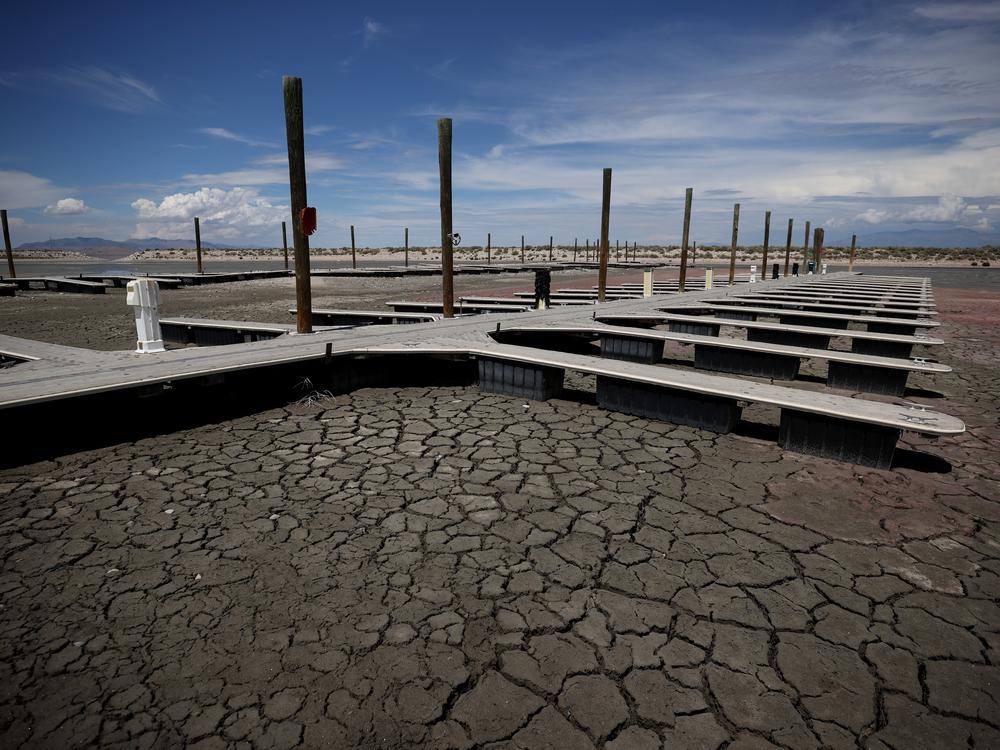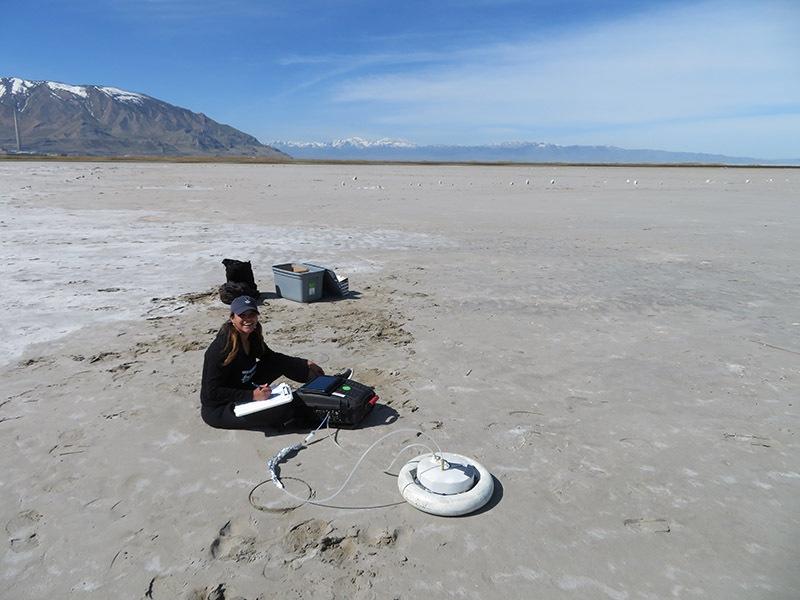Section Branding
Header Content
As the Great Salt Lake dries up, it's also emitting millions of tons of CO2
Primary Content
Scientists say the drying Great Salt Lake in Utah is now becoming a significant contributor to global greenhouse gas emissions that are causing the climate to warm, according to a new study.
Due largely to water diversions by farmers and Utah’s booming population growth, the Great Salt Lake has shrunk by almost half in recent years.
Scientists spent seven months in 2020 sampling emissions coming off the dried saline lake bed. Canada's Royal Ontario Museum published the study on Thursday in the journal One Earth.
"Human-caused desiccation of Great Salt Lake is exposing huge areas of lake bed and releasing massive quantities of greenhouse gases into the atmosphere," said Soren Brothers, the museum's climate change curator who led the study.
"The significance of lake desiccation as a driver of climate change needs to be addressed in greater detail and considered in climate change mitigation and watershed planning," Brothers added.
The researchers found that the drying lake bed emitted 4.1 million tons of carbon dioxide and other greenhouse gases into the atmosphere, which would translate to a 7% increase in Utah’s human-caused emissions. According to scientists, 4 million tons of CO2 is roughly equivalent to the total annual emissions of 140 commercial planes.
The Great Salt Lake is the largest saline lake left in the Western Hemisphere. The study occurred during one of the most notorious dry stretches of the West’s mega drought, which had lasted two decades at the time of the study.
What's causing the lake to dry up?
Scientists say the West is as dry as it's been in 1,200 years. The prolonged drought has been made worse by climate change.
Agriculture has also played a huge role in the lake's decline. Upstream water diversions for expanding alfalfa farms and dairies has resulted in less flows into the lake. Utah's rapid population growth has also been to blame.
What's the impact of a shrinking lake?
The loss of water has serious impacts on the lives of animals and people.
Researchers in Utah have begun to detect sharp declines in shorebird populations, such as burrowing owls and snowy plovers, as a result of brine shrimp dying out.
Dust storms and air pollution, born out of a dried up lake bed, is also a major concern for Utah residents. Scientists have also warned that the lake has high concentrations of neurotoxins and cancer causing carcinogens — including arsenic and mercury.
That's worrisome for the majority of Utah's 3.3 million population who live near the lake.
What's been Utah's response?
The Great Salt Lake’s levels have rebounded slightly in recent years due to the last two snowy winters. Though it is still shrinking, some believe the recent moisture bought Utah some time to reverse its decline.
Utah Gov. Spencer Cox pledged to prevent the lake from drying up on his watch.
"For generations the lake was seen as kind of this dead thing that just happens to be there and will always be there," Cox told NPR in April. "And now that people are realizing there's a potential that it might not always be here, that's gotten people's attention in a positive way."
In recent years, the state legislature invested roughly a billion dollars into water conservation programs, most geared to farmers.


